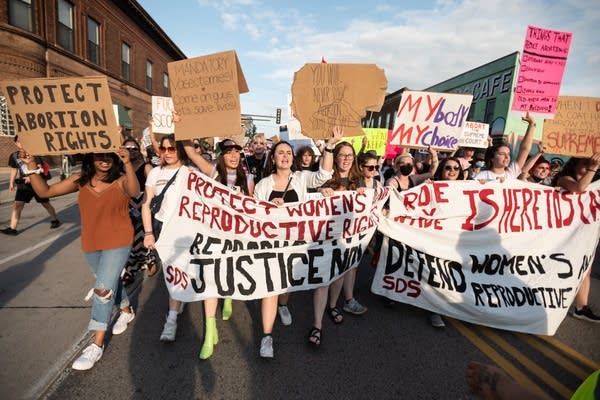Anger to action: How DFLers transformed Minnesota abortion rights after Roe

Hundreds of people marched through the streets of Minneapolis against the Supreme Court decision to overturn Roe v. Wade on June 24. One year later, MPR News revisits how Minnesota reacted.
Caroline Yang for MPR News | 2022
Go Deeper.
Create an account or log in to save stories.
Like this?
Thanks for liking this story! We have added it to a list of your favorite stories.


